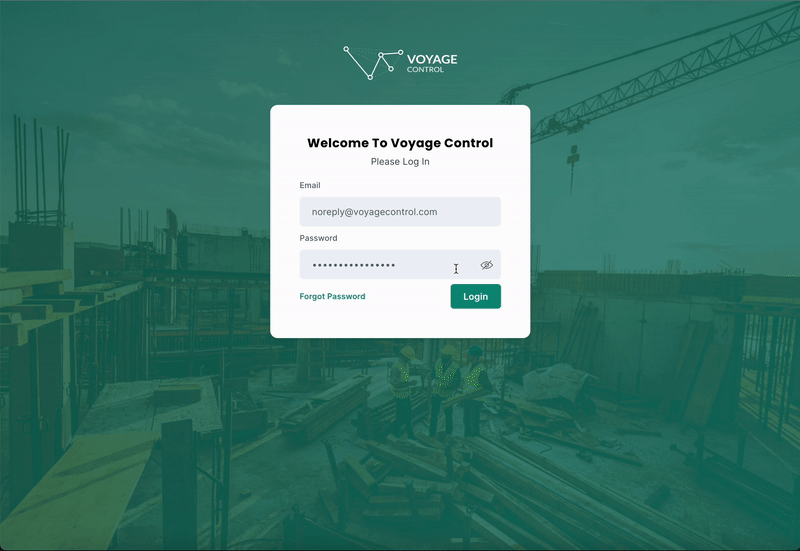In our first release of this new series, we discussed why now is the perfect time to start rebuilding the Voyage Control platform and illustrated how we are facilitating this new step forward. This second article is following our tech team through the recent developments on the project now that they have completed their fifth Sprint and building great momentum.
How we work
In the last article, we explained that we’re running the project using Sprints, which is a practice that's part of the Agile Methodology.
When starting a new project, it takes a bit of time to figure out the best working practices. No two projects or teams are the same, so trying to apply a methodology that might have worked well in the past won't necessarily work as well for a new project or team. No matter how much planning you do or the processes you put in place, there are always going to be things you didn't consider or challenges that come out of nowhere. That's why it's important to be critical of the process and adaptable in light of new information, hence the name ‘Agile’. However, what's even more important is that the whole team is onboard and feels comfortable sharing their challenges as well as ideas for how we can be better.

In addition to daily stand-ups, where the team can raise any immediate issues or blockers, we hold a ‘Retro’ at the end of every Sprint. The Retro session includes the whole team, developers, product managers, design, and QA (Quality Assurance). We look back at the previous sprint, what went well, what we should look to do more of, and what didn't go so well or where we need to improve. These are powerful and have allowed us to make changes to how we work that have led us to be much more efficient now than when we started.
For example, in the first few sprints, we planned the development of complete features within a single sprint. However, we would often find that Front-End developers would be waiting for Back-End developers to complete their tasks before they could finish their own, and vice versa.
A solution was put forward to stagger FE and BE tasks across subsequent sprints. This means that all of the work that the FE developer is dependent on, to finish their task, has already been finished in the previous sprint which led to less dependency on others to complete tasks in the same sprint and thus no time wasted.
What we’ve built so far
We have been building some of the core components that any software platform needs. This includes;
- Onboarding: The facility for which a new user is invited, signed up, adds their details, and becomes a fully-fledged Voyage Control user.
- Login and Authentication: The main point of entry for a user to access the platform, and the place we check their username and password to verify they are allowed to access the platform.
- Mission Control: This is an area for the Voyage Control team. This is a behind-the-scenes area that allows all Account Managers at Voyage Control to set up and manage projects for new and existing clients.
- Project Menu and Home Page: The project menu is the main navigation tool for users to get around the platform. The home page is where users will land when they access a project. Here they will find all the information they need about the project, including, location, contacts, and instructions.
- Organisations: This is an important part of the platform where we can group users into their organizations. This fits into the onboarding process where a new user will either join their colleagues in an already created organization or if they are the first, create a new organization to which they can invite their colleagues.
- Projects: Probably the most important part of the Voyage Control platform. The project is at the center of managing all the information collected and defines the rules about who, how, and when bookings can be made.

What challenges have we tackled?
Data Sovereignty
Data security and data sovereignty are something our clients are talking to us about more and more. Understandably, they want to trust that their data is only accessible to those they have authorized to access it and that it is protected should anything happen. We are following current best practices to ensure that the data in our platform is stored and transmitted securely.
Data Sovereignty is a fairly new idea, this is where data is kept in the region where the business operates. For example, a European company might want its data to remain in the EU and not be stored in data centers in the USA. This is a tricky challenge and one that needed careful consideration. A simple approach would be to take the platform and all of the infrastructure that supports it and replicate it in each region. This is not ideal because each replicated instance exists in isolation from the others. This means that if a user needed access to projects in two different regions they would have to create two separate accounts. Not to mention the additional maintenance burden to keep all instances of the platform aligned and in check! No need to fear though, our talented tech team has come up with a solution that ensures data remains in the region it should reside, while users are free to move from project to project uninterrupted. So long as they have permission to visit the project.
Simplicity
One of the significant questions we hear from our clients is ‘How do we do that?’ We love helping our clients to find ways to use Voyage Control to improve their operations, but as the platform has added new features it has got much more complicated to set up and use. Currently, setting up and learning how to use a new project site will almost certainly require spending some time with one of our account managers.
That's why we have focused on making sure the new app will be straightforward to use and over time we will build out features that mean that projects can be set up and managed independently. Our Account Manager team will always be on hand if you have any questions, but this will mean a new project can be started in a matter of minutes rather than a matter of days!
Scaling
When we began building the first version of the Voyage Control platform we couldn't have predicted how our client's needs would change over time. That's still true today, but we can look to the future and try to understand where our clients are heading, and the challenges they might face. Some of the key topics that regularly come up in our conversations are;
- They need to understand not just the deliveries, but the materials that are being delivered and the quantities of them.
- They need to understand where the items being delivered are coming from so that we can ensure compliance with environmental, social, and governance (ESG) policies
- They need to understand the full supply chain, not just the last mile of delivery. This is in case any delays or issues can be flagged well before the materials are scheduled to arrive at the site.
- They need access to comprehensive, rich, and organized data about the site operations for corporate reporting on performance.
With this in mind, we are making many considerations in how we build the platform and structure data to avoid building in any limitations that could slow or inhibit development in these areas in the future.

What's next
The areas that our tech team will be building next are;
- Project Management: The area where the project team can define the core project details, contacts, and site rules so anyone making a booking has all the information they need.
- Resources: The area where new resources, such as tower cranes or forklifts can be set up for use on-site.
- Availability System: The area where the project team can manage who, what, where, when, and how deliveries can be made to the site.
Note: All included screenshots of the new platform are an overall example of the look and feel of the new platform. These screens are still in development so minor changes may occur between now and the final release.
Written by Scott Whiteside / Edited and Published by Adrian Sakellaris
